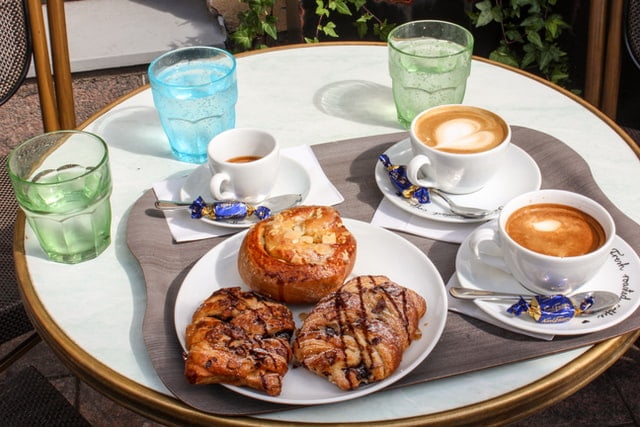In Finland, coffee is not just a drink; it is a cornerstone of culture, a ritual practice and a symbol of warm hospitality that transcends the cold Arctic. Discover the Finnish coffee culture, a phenomenon that makes Finland the world’s largest per capita coffee consumer, a testament to its undeniable importance in the daily rhythm of Finnish life.
It is no exaggeration to say that Finns take coffee very seriously: it is an integral part of their social fabric, and the subtle art of brewing and consuming it is something of a national pastime. In fact, studies show that Finns consume an average of five to six cups a day, making them the country with the highest per capita coffee consumption in the world.
Want to know why the Finns drink so much coffee? We tell you how the Finnish coffee culture came about and why coffee consumption is so high. Keep reading!
Contenidos
Why does Finland consume a lot of coffee?
The main reason why Finns consume so much coffee is because of the low temperatures encountered in winter, with long periods of sub-zero weather.
The low temperatures make it especially tempting to have a cup of coffee when coming home or going to work with a thermos of hot coffee. In hot summers, iced coffee becomes the Finns’ best ally in combating the high temperatures.
This is not only the case in Finland, the other Nordic countries, where temperatures are also low, are also big fans of coffee.

How much coffee is consumed in Finland?
According to a study published by the International Coffee Organisation (ICO), Finland leads the list of countries with the highest coffee consumption with an average of 10 kilos of coffee per capita. This translates into a consumption of more than 3 cups of coffee per person per day.
Countries such as Denmark and Norway are next in the ranking of coffee consumption per capita, but they are far behind the Finnish average.
Finns start the day with a cup of filter coffee and have another one in the evening when they come home from work. The working day also usually starts with a cup of coffee and there are several coffee breaks during the day. In fact, Finland is the only country in the world where a coffee break is included as a worker’s right.
What kind of coffee do Finns drink?
Finns usually drink their coffee black, although it is a much milder, watery coffee with a very light roast. In recent years, Finns have started to move towards darker roasts.
They often accompany their coffee with different types of traditional Finnish pastries. Serving coffee with a bun or cake is so common that the Finns even have a word for it: kakkukahvi.

Coffee time is often considered a social activity, so it is very common to have coffee in company. Coffee shops are the ideal meeting place for coffee in Finland. Coffee is also served when visiting someone else’s home or when receiving a visitor in your own home.
Don’t be afraid of the silence either. In Finland, it is very common to have coffee with a co-worker or a friend and be totally silent while enjoying your cup of coffee.
How did the coffee tradition in Finland come about?
Coffee came to Finland in the 17th century from neighbouring Russia and Sweden. At that time, it was a drink for the country’s rich and elite. Some even considered it a medicine with healing qualities.
In the 18th century, coffee spread throughout the country and all Finns began to drink it. Its prominence increased especially in 1919 when alcohol was banned in the country.
With the advent of World War II, coffee had to be rationalised and Finns had to look for organic substitutes. After the war, coffee returned to Finland and its popularity has grown steadily ever since.
What do you think of the Finnish coffee tradition? Have you tried Finnish coffee? Let us know in the comments and, if you found the article interesting, we encourage you to share it on social media using the icons below.
